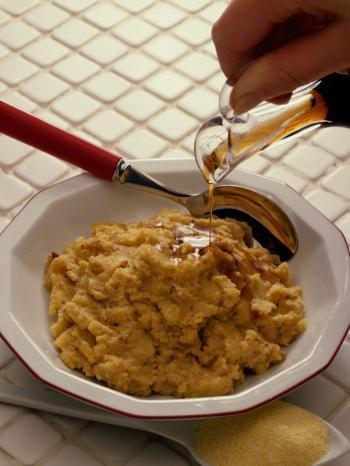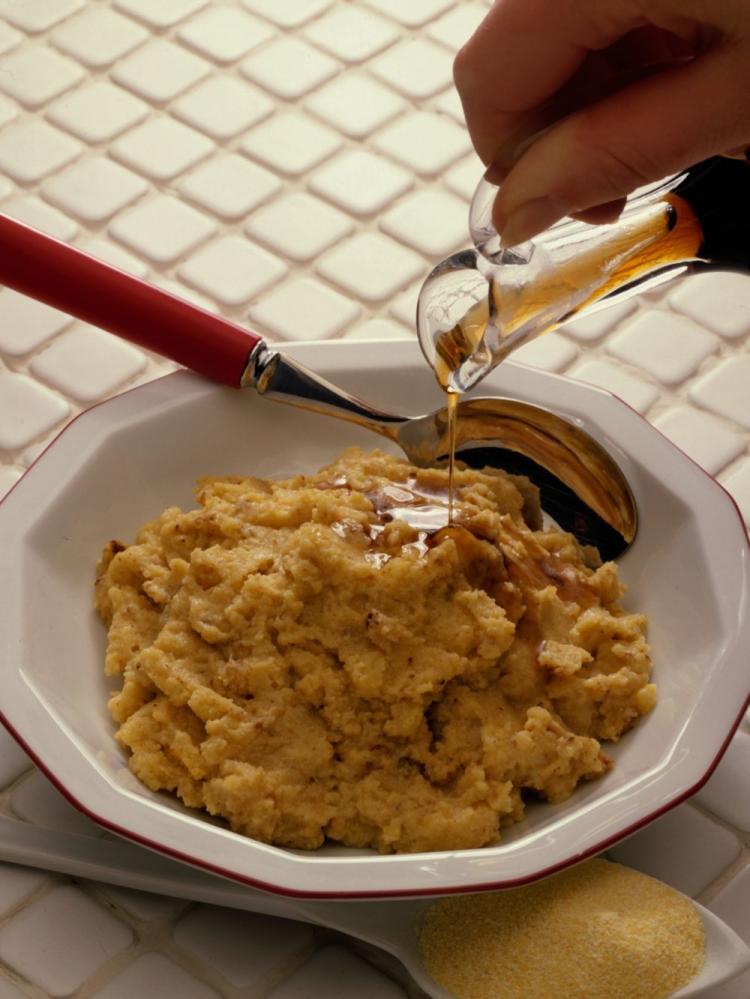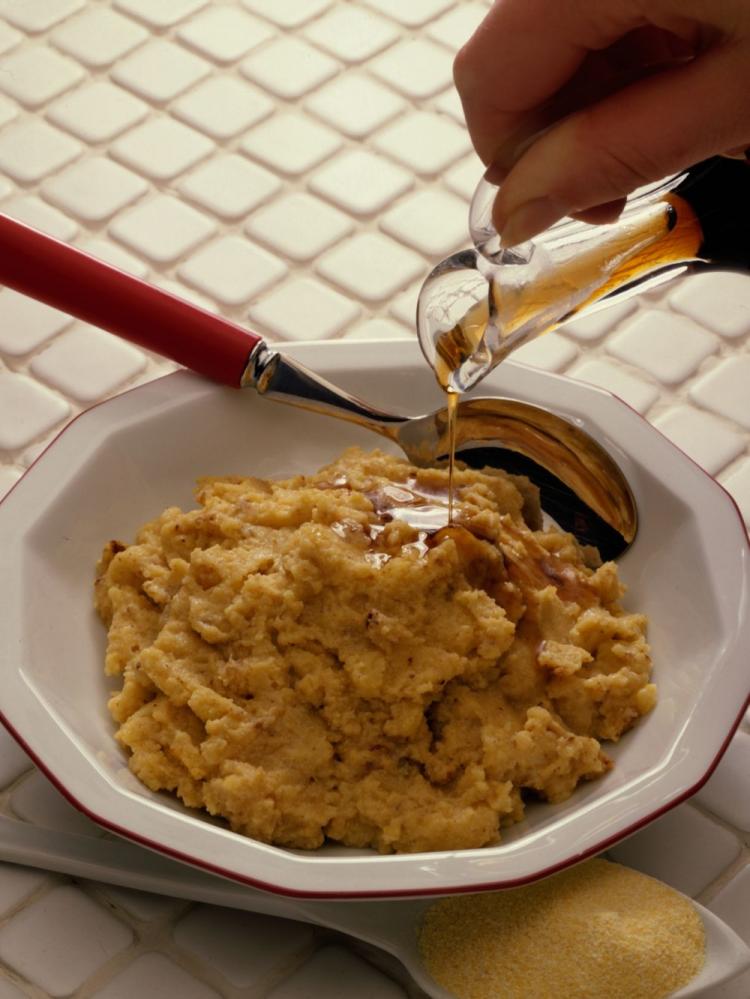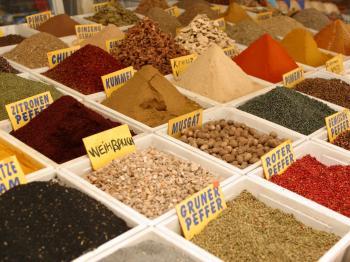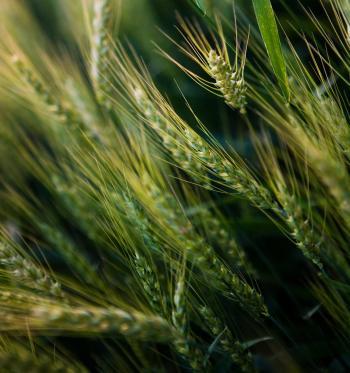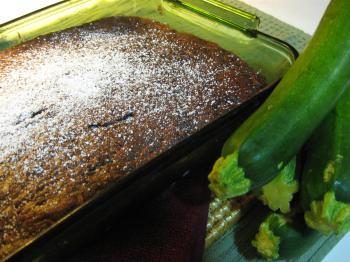When we immigrated to the United States, we had to leave much behind, often even family members. But what we took with us stayed with us. For instance, our fondness for our native foods. For us Italians, it is polenta, that tremendously versatile preparation of ground cornmeal, and its many preparations that other nationalities have since come to appreciate.
Polenta was not always prepared from ground corn. Italians came to know polenta in its present form only in the late 1700s, with introduction of maize to Italy from the New World. In the interim, since the 1550s polenta meant simply “crushed legumes or grain,” particularly barley. There are delicious modern polenta versions made from chickpea flour, native to the Italian Leguria Region.
The mashed grains or legumes were peasant food, and more often than not the grains, the only subsistence food impoverished people had, were moldy from lack of proper drying. When they had it, the peasants would add poor quality cheese or an onion to the mixture. This monotonous diet often led to sickness. Their food was filling, but not nutritious, because the human digestive system cannot extract the nutrients from the way the corn is processed, in contrast to the Amerindians who lived on corn [maize] but processed it differently. Italian peasants consuming nothing but polenta often contracted pellagra, caused by a nutritional deficiency in niacin and protein. The peasants had nothing else to eat, so they stuck with it.
Polenta has come a long way since then. As access to inexpensive protein and vegetables augment our modern, superbly tasty versions of polenta, the varieties of polenta preparations are astonishing, as are the ways it is served. Now it is usually attractive, with meat or fish on the side, sauced or simply with melted butter and or grated cheese, decorated with a colorful array of vegetables. Well-prepared polenta should be slightly creamy, with just a touch of “bite” left to the grain.
Each Italian housewife has her own favorite way of cooking polenta. The traditional way calls for stirring the dry grain into boiling water and keep stirring until the cooking process is finished. For those who want to try polenta but are daunted by the cooking process, ready-cooked polenta, often in the shape of a sausage, is available in larger grocery stores. It keeps well in the refrigerator until ready to be used. Simply follow the instructions on the package. Instant polenta that comes in a box is another option.
For an authentic Italian taste treat, follow this recipe:
Ingredients:
7 cups water
2 tablespoons salt
1 2/3 cups coarse ground yellow Italian cornmeal
Use a heavy-bottomed pot and have water and salt boiling. Add the cornmeal in a thin stream, stirring constantly while adding the cornmeal. Bring the mixture back to the boil. When the surface is covered in bubbles, remove the pot from the heat, put a sheet from a brown paper bag (or wax paper) fitting the pot directly on the mush, clamp on the lid and set aside for 45 minutes. No need to stir! When the time is up, the polenta is ready. The paper and the tight lid keep the steam in, cooking the food while you prepare the delectable “go-with” for your meal:
Have ready a handful of good, hard grated cheese, such as Pecorino-Romano, or Parmesan; Sizzle a bit of Italian ham until crisp. Slice fresh tomatoes and gently steamed sliced zucchini. Portion the polenta onto plates and decorate with the tomatoes and zucchini. Serve with a drizzle of olive oil.
Buon appetito!
Polenta was not always prepared from ground corn. Italians came to know polenta in its present form only in the late 1700s, with introduction of maize to Italy from the New World. In the interim, since the 1550s polenta meant simply “crushed legumes or grain,” particularly barley. There are delicious modern polenta versions made from chickpea flour, native to the Italian Leguria Region.
The mashed grains or legumes were peasant food, and more often than not the grains, the only subsistence food impoverished people had, were moldy from lack of proper drying. When they had it, the peasants would add poor quality cheese or an onion to the mixture. This monotonous diet often led to sickness. Their food was filling, but not nutritious, because the human digestive system cannot extract the nutrients from the way the corn is processed, in contrast to the Amerindians who lived on corn [maize] but processed it differently. Italian peasants consuming nothing but polenta often contracted pellagra, caused by a nutritional deficiency in niacin and protein. The peasants had nothing else to eat, so they stuck with it.
Polenta has come a long way since then. As access to inexpensive protein and vegetables augment our modern, superbly tasty versions of polenta, the varieties of polenta preparations are astonishing, as are the ways it is served. Now it is usually attractive, with meat or fish on the side, sauced or simply with melted butter and or grated cheese, decorated with a colorful array of vegetables. Well-prepared polenta should be slightly creamy, with just a touch of “bite” left to the grain.
Each Italian housewife has her own favorite way of cooking polenta. The traditional way calls for stirring the dry grain into boiling water and keep stirring until the cooking process is finished. For those who want to try polenta but are daunted by the cooking process, ready-cooked polenta, often in the shape of a sausage, is available in larger grocery stores. It keeps well in the refrigerator until ready to be used. Simply follow the instructions on the package. Instant polenta that comes in a box is another option.
For an authentic Italian taste treat, follow this recipe:
Ingredients:
7 cups water
2 tablespoons salt
1 2/3 cups coarse ground yellow Italian cornmeal
Use a heavy-bottomed pot and have water and salt boiling. Add the cornmeal in a thin stream, stirring constantly while adding the cornmeal. Bring the mixture back to the boil. When the surface is covered in bubbles, remove the pot from the heat, put a sheet from a brown paper bag (or wax paper) fitting the pot directly on the mush, clamp on the lid and set aside for 45 minutes. No need to stir! When the time is up, the polenta is ready. The paper and the tight lid keep the steam in, cooking the food while you prepare the delectable “go-with” for your meal:
Have ready a handful of good, hard grated cheese, such as Pecorino-Romano, or Parmesan; Sizzle a bit of Italian ham until crisp. Slice fresh tomatoes and gently steamed sliced zucchini. Portion the polenta onto plates and decorate with the tomatoes and zucchini. Serve with a drizzle of olive oil.
Buon appetito!

